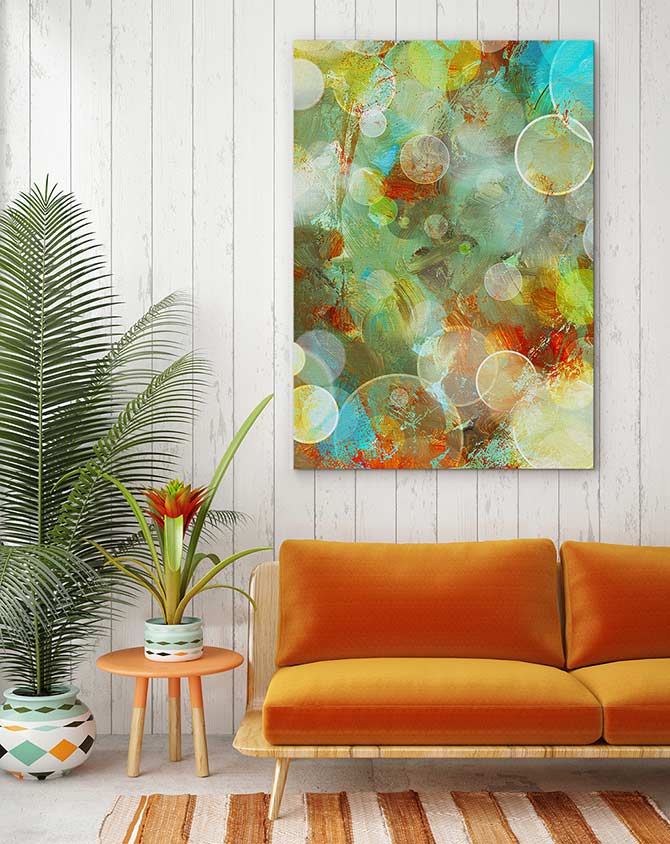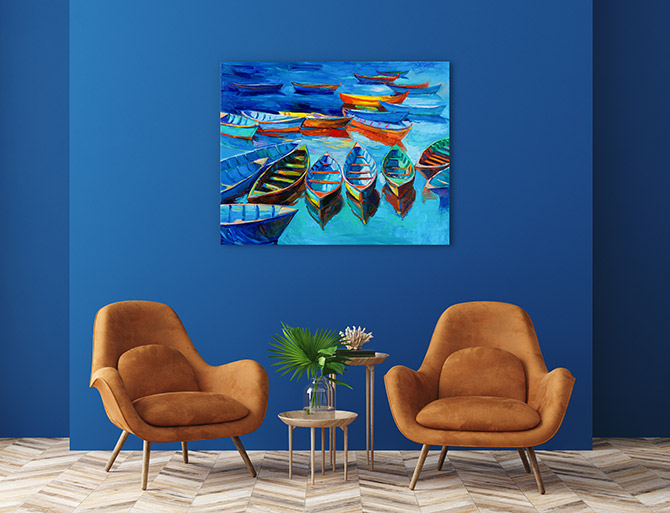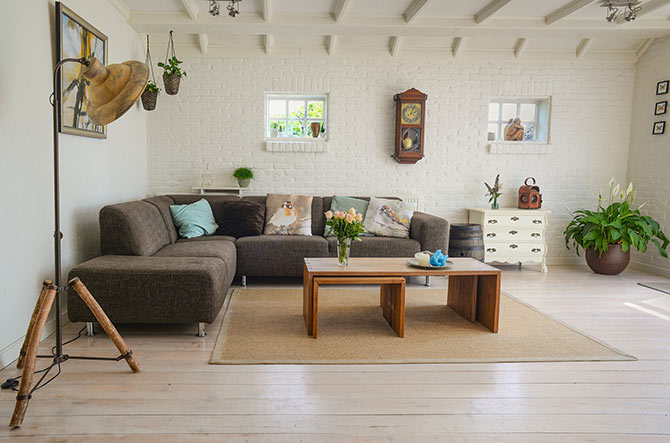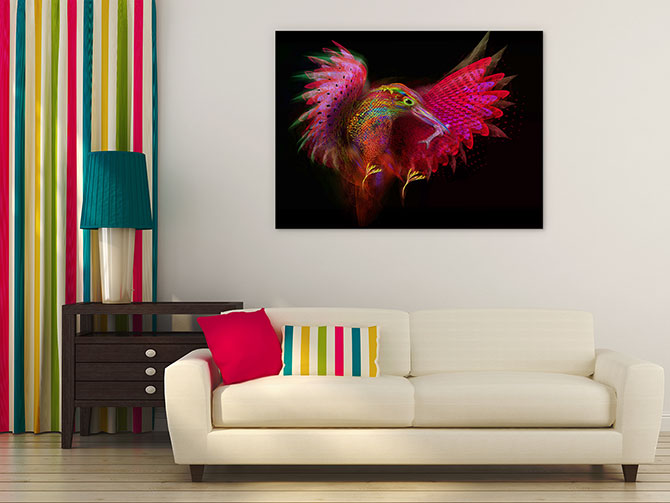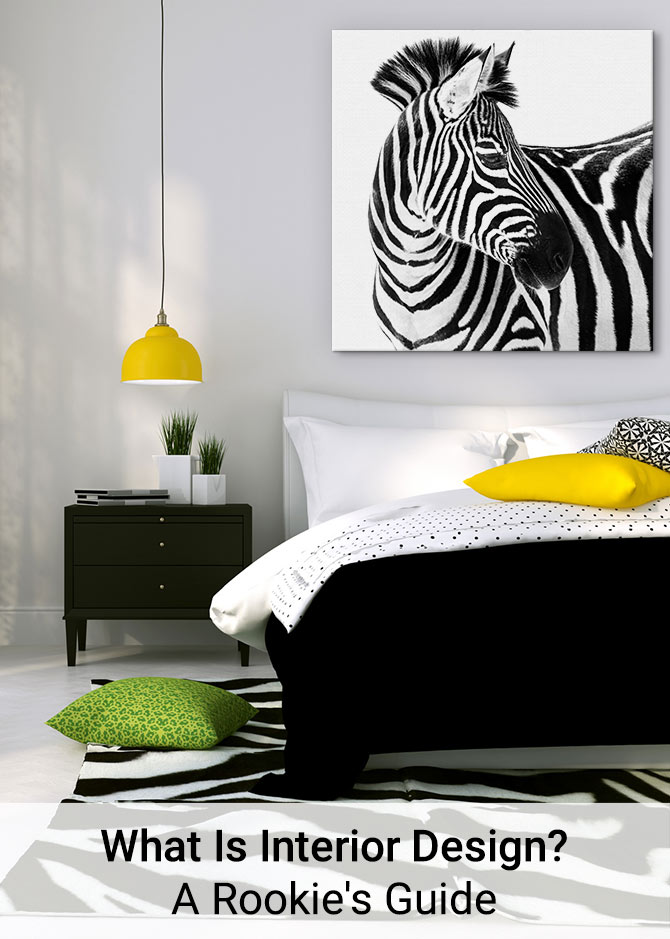
What is interior design? Is it hard? Can anyone do it? How hard can it be? How do I know if something is good or bad? Can I DIY my own interior design? How can I avoid epic fails?
Whether you’re naturally bold and creative or just want a beautiful, fuss-free home, these are the questions that often crop up from those who are entering this exciting new world.
When you reflect on the fact that there are university degrees where you can learn the ins and outs of interior design to set you up in a career as a professional interior designer, it can be quite confronting to think that ‘anyone can do it’.
But like with any creative artform, it’s something that takes time and practice – and an understanding of the fundamentals.
A great way to get started is to read articles and blogs like this one and visit show rooms, home shows and fabric stores. It will help give you a taste of the latest trends and give many of those important senses a good working out.
Once you’ve mastered the skills, consider adding the finishing touches to your decor with beautiful canvas artwork.
If you’re a rookie to the biz and eager to get started, this guide is a helpful shortcut. Be sure to send us photos of the results of your new skills!
1. Decide The Purpose
“The best rooms also have something to say about the people who live in them” – David Hicks
Interior design isn’t about looking through home magazines and carbon copying what’s in them. What works for one space won’t work for another. What works for one person or family won’t work for another.
It’s also important to avoid the trap of thinking that every room in the home has to complement every other room in the home. While it’s important to feature commonalities throughout – timber floors, tiling, carpets, fitting and fixtures – you can give each room its own personality.
But prior to thinking of style, have a think about a room’s primary function. A home office where you need to be energised, alert and inspired will have a very different look and feel to a bedroom where you can give yourself permission to be weary, relaxed and calm.
Decide on the purpose of a room first and everything will flow from there.
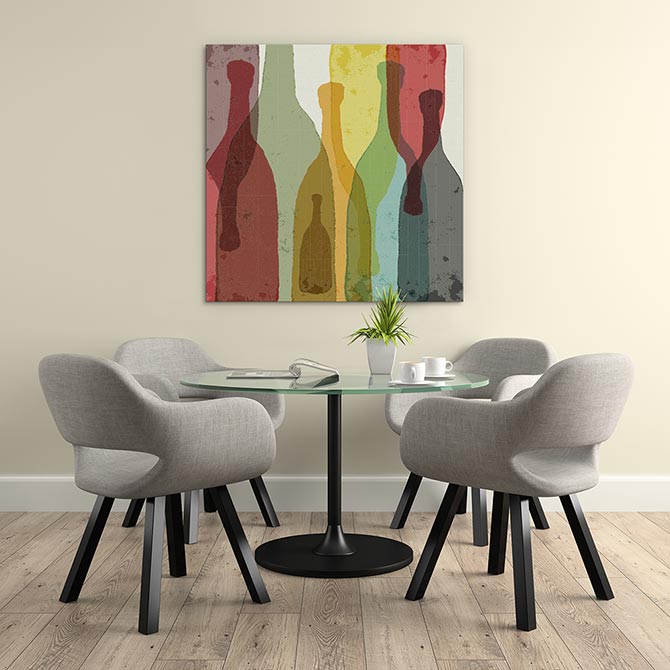
ENTERTAINER’S DELIGHT: Delight guests by sprucing up a functional dining room with a funky print like ‘Good Times’.
2. Create Harmony
Like in life, harmony in interior design is all about embracing what things have in common with each other – elements that belong together.
When designing a room, repetition of colour, shade, shape, texture and form can build harmony.
For example, when choosing a cushion to match a couch, try finding something that features a pop of the same colour in it or a different shade that belongs within that colour palette.
It’s not about being boring or being all matchy-matchy. When a room is harmonious it just feels right!
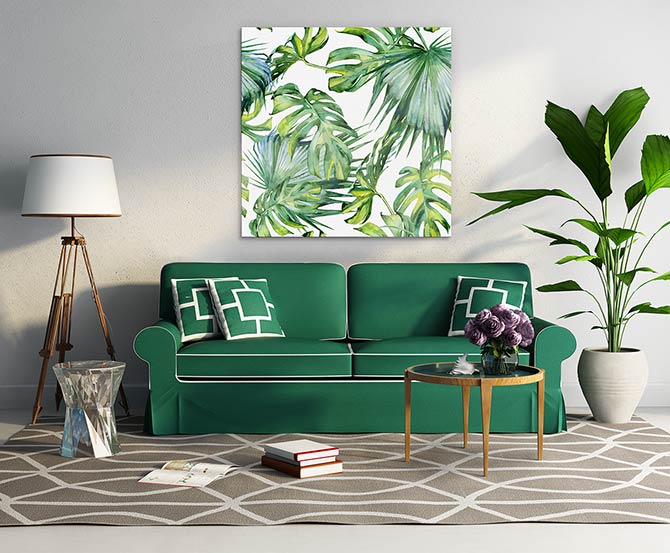
HARMONIOUS: Neutrals, whites and greens unite this room along with this ‘Tropical Jungle Leaves’ art print.
3. Build Balance
The key to giving a room the right balance is ensuring there is an equal distribution of visual weight within a room. The elements need to sit along a central axis in the room. This axis might be real or imaginary.
A balanced room is often about honouring symmetry, dividing a space into two halves that are exactly the same. However, there’s nothing wrong with being purposefully asymmetrical or using what’s called a radial design – a design that organises elements that radiate around a focal point, almost in a circular fashion.
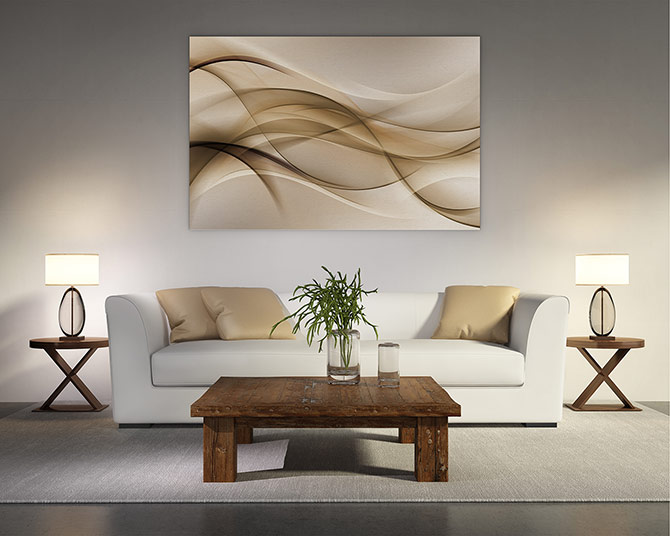
STYLISH: Embrace symmetry with ‘Softly’ as your focal point and a perfect split of couch, cushion, table and lamp.
4. Establish Rhythm
Rhythm is one of the key secrets to creating a first class interior. To make something visually interesting use patterns of repetition and contrast.
Create rhythm in a room by using colour throughout various elements like pillows, art prints, rugs, ornaments and plants.
Alternatively you can also create rhythm by alternating colours – 121212 or 123123123.
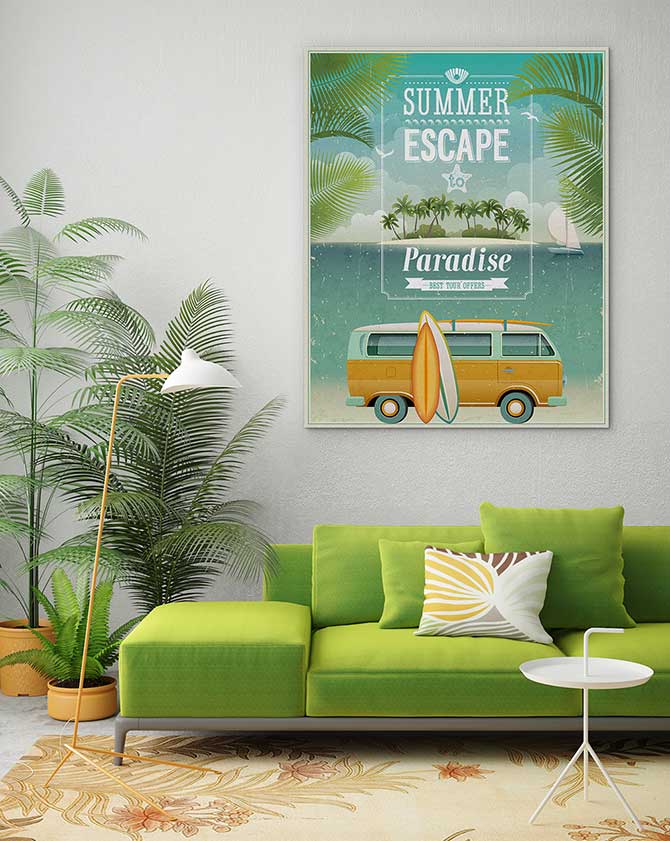
VISUAL DELIGHT: Citrus contrasting is celebrated here with this lime and orange ‘Summer Escape’ print in rhythm with the fresh, fun, complementary decor.
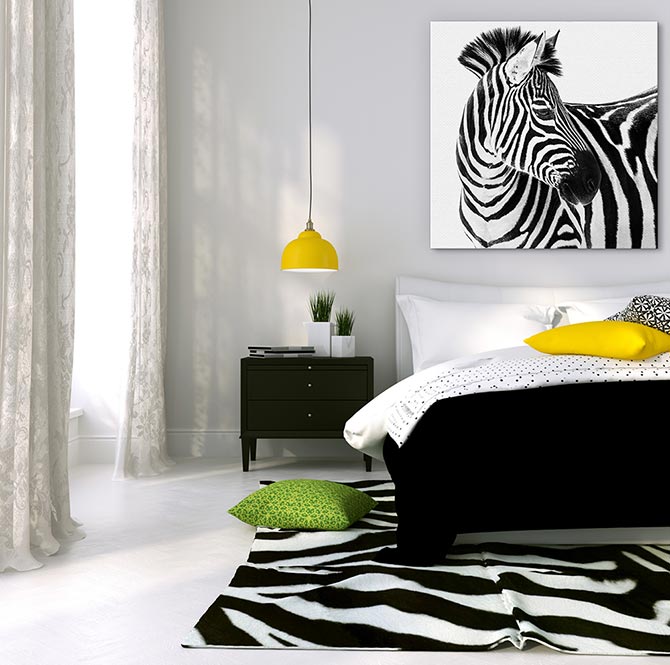
WILD: Patterns in the rug and in the ‘Up Close And Zebra’ print as well as black, white and yellow are used in chic repetition.
5. Choose Emphasis
Many well-balanced rooms often have focal points – key features that appeal to the eye as soon as someone walks into the room. A room with too many focal points – too many key features – can often appear unbalanced, confusing and cluttered.
Create a focal point by emphasising a particular piece of furniture or artwork. Fireplaces – both traditional and contemporary – are often used as focal points in living rooms. Today, with the recent introduction of affordable super sized art prints, artwork is often used as a focal point in a bedroom. Grand entry halls often feature chandeliers.
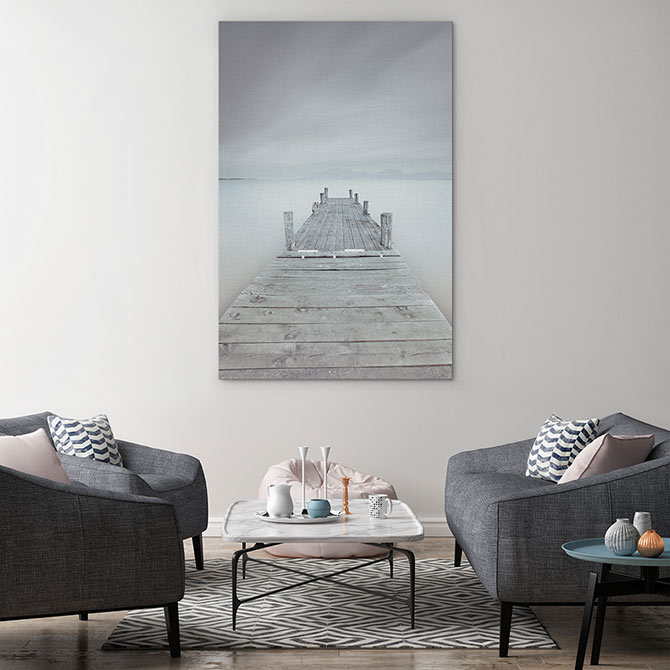
APPEALING: The artwork ‘Pier On The Frozen Lake’ is an example of how a room’s focal point can be serene and subtle.
6. Play With Proportion And Scale
Proportion and scale is something that the team at Wall Art Prints is passionate about. We love talking to our clients about the best size print to fit the space available to them.
Our job is not to sell you the biggest and most expensive print. Our job is to sell you the best print for the size available to you.
When positioning furniture in a room or mounting something on the wall (whether it’s an art print, a mirror or a wall hanging) it’s vital to make sure you leave enough ‘white space’ to avoid a cluttered look and feel.
By white space we’re not talking ‘literally’ white. It’s an interior design term that means space with nothing on it – blank space.
Be sure to keep in mind that if you have too much white space, decorations can get completely lost. This often happens when someone buys a print that’s proportionally too small for their wall. Keen to learn more? Discover how to hang pictures now.
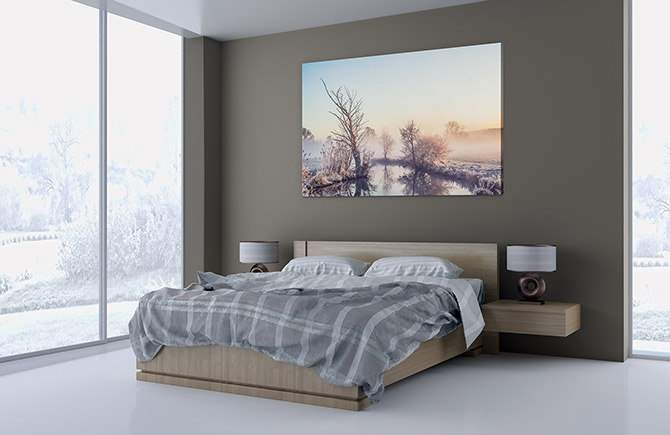
SIZE MATTERS: This ‘In The Morning Mist’ print is in perfect proportion to the width of the bed, both with plenty of white space.
7. Impact Emotion Through Colour
Colour psychology is a whole field of study in itself, but the most important thing to keep in mind when considering what colours to choose for a room is how much a particular colour can impact on our emotions.
To summarise:
Orange – evokes enthusiasm
Blue – inspires calm
Purple – restful
Green – refreshing and facilitates togetherness
Yellow – exudes happiness and comfort
Red – pumps up energy levels.
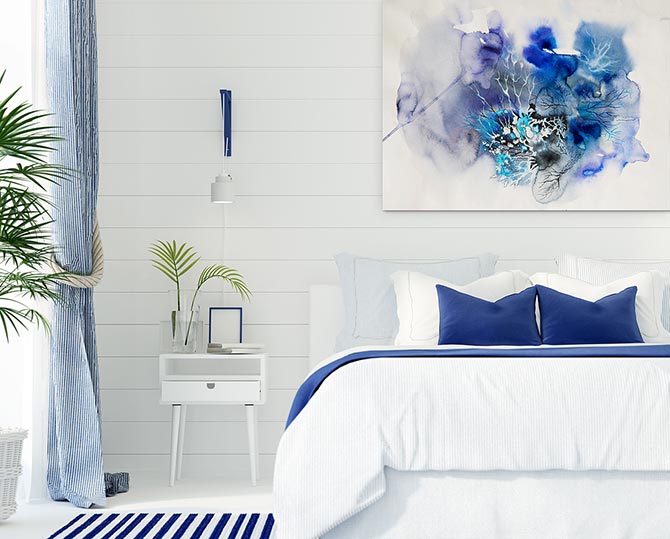
SERENE: This striking blue and white interior decor featuring the gorgeous ‘Ink Blot Abstract In Blue’ print is all about the calm.
8. Select Finishing Touches
Once you’ve got the major elements of a room sorted like flooring, furniture, curtains and rugs, the most fun part is accessorising!
Finishing touches are where you can channel your creativity and express your personality. Accessorise with artwork, pots, plants, ornaments, wall hangings, side tables, cushions, blankets and more.
The great thing about home accessories (or decor) is that, just like clothing accessories, you can pack them away at the end of each season and pick something new to celebrate the unique needs and stylings of Summer, Autumn, Winter and Spring.

